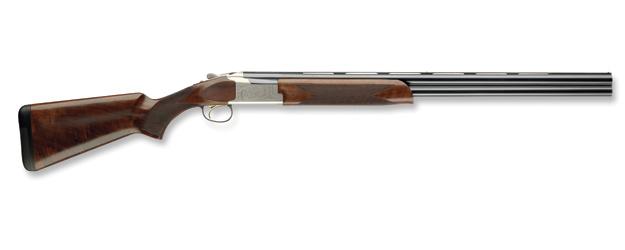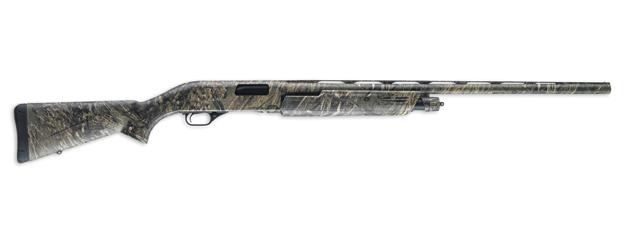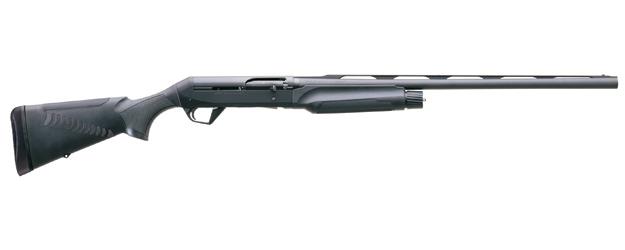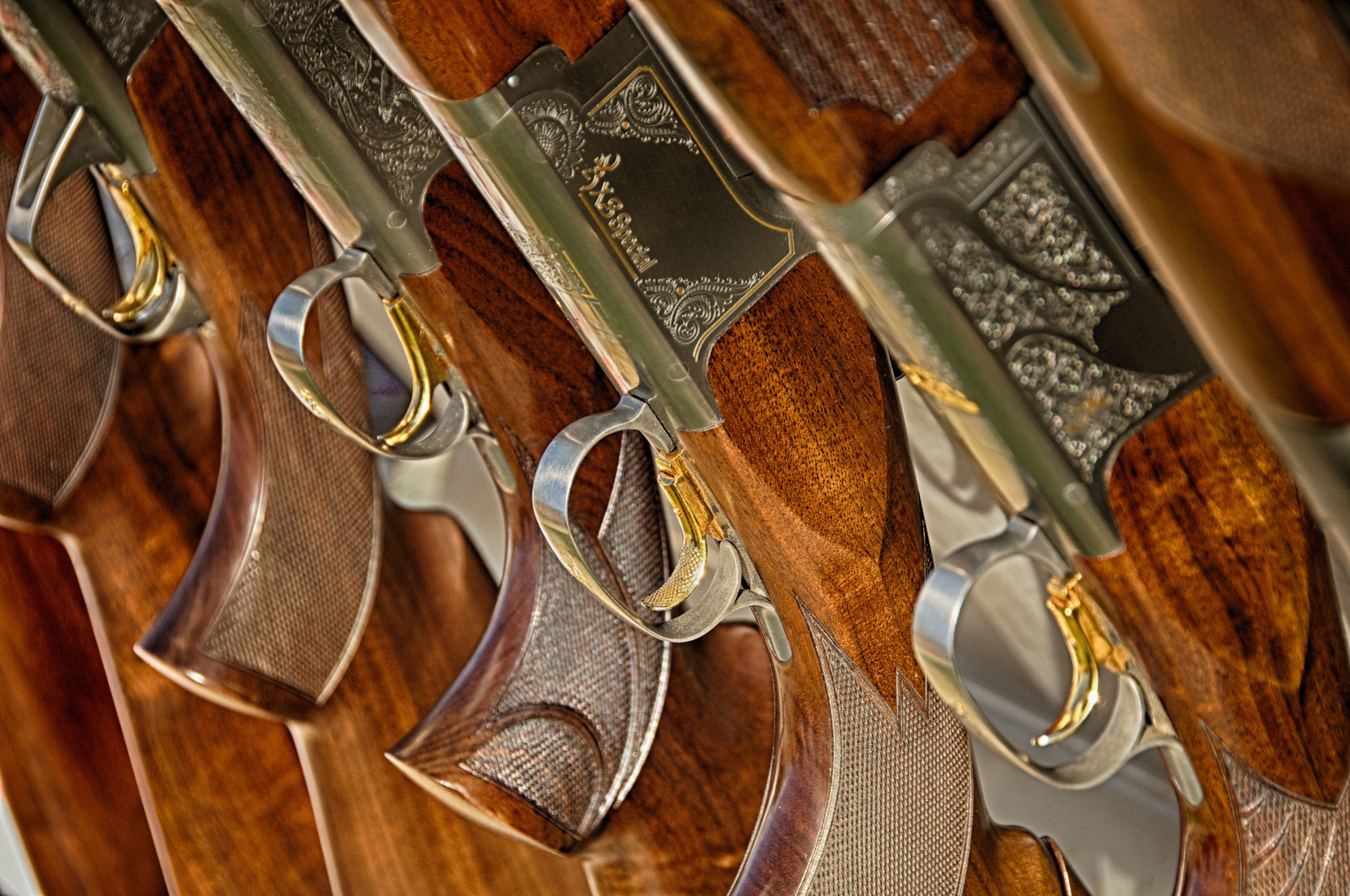Advertisement
Want to get excited about waterfowling during the winter off-season? Go shotgun shopping. After all, the process brings with it the promise of exciting days afield while rekindling memories of hunts past. And, of course, you get to handle as many guns as you can before you finally settle on the one that fits, handles and swings most comfortably in your hands. Never before have waterfowlers had the diversity of choice they have today when it comes to shotguns. That can make the selection process a challenge, but it’s also never been more fun thanks to all those choices. So, where to start? By first surveying the various options to identify the type of shotgun that will best serve your needs. Here’s how to get your ducks in a row before making that final purchase.
Choice #1: Gauge
This is pretty much a no-brainer, with the 12-gauge dominating the waterfowling world today. There are some situations in which the 20-gauge is more than adequate, particularly when shooting decoying birds up close; it can also serve well for young shooters. But the 12-gauge is far more versatile, with cheaper, easier-to-find shells.
Advertisement
The 10-gauge also has its advocates, but its use is limited. Certainly, the large-capacity loads can be advantageous for pass-shooting geese or hunting sea ducks, when ranges can be extended and clean kills will save considerable trouble in retrieving birds. Beyond that, however, any advantages are offset by the significant increase in recoil and the exorbitant cost of shells. If you truly need a 10-gauge, look to Browning’s BPS pump-action or Gold Light semi-automatic, or Remington’s Model SP-10 semi-auto. All three shotguns come clad in camo and feature 3 1/2-inch chambers and interchangeable chokes.
I’d be remiss in not mentioning the venerable 16-gauge, once the favourite among waterfowlers. Browning still chambers its BPS in 16, but the limited availability and high cost of factory loads make this gauge impractical for most hunters. Every few years, I hear talk about the resurgence of the 16-gauge, but it’s never been able to regain the foothold it once enjoyed.
Choice #2: Chamber Length
In new waterfowling guns, three-inch chambers are pretty much the standard. Compared to 2 3/4-inch shotshells, three-inch loads allow for greater shot capacity, which is important when hunting on big water or for any of the larger geese. I wouldn’t select a 2 3/4-inch smoothbore unless I was confining my waterfowling to decoying ducks, when the shorter length shells are perfectly fine and offer reduced recoil. Ninety-five per cent of the time, a 12-gauge shotgun with a three-inch chamber best suits today’s waterfowler.
Advertisement
The third option out there is the 3 1/2-inch chamber, available in many specialty waterfowling shotguns. The 3 1/2-inch option emerged in the late 1980s in response to the introduction of steel shot for waterfowling. This chamber length provides greater capacity for the larger pellets needed to compensate for steel’s inferiority to lead, both in terms of downrange energy and patterning. Vast improvements in steel loads have since been made, however, so there’s little need to go with the 3 1/2-inch shell and its hefty price tag—not to mention severe recoil.
Choice #3: Barrel Length
Many of us grew up believing a 30-inch barrel was the only way to go for serious waterfowling. After all, it was the standard barrel length on most over-the-counter guns. The belief was that the extended sighting plane contributed to better accuracy. I still have my grandfather’s 12-gauge H&R single-shot goose gun in my rack, and it has a 34-inch barrel. Based on yesterday’s theories, it should be the ultimate waterfowler’s gun. Times have changed, however, and fortunately hunters and manufacturers alike have reshaped how we look at barrel length.
In a perfectly static situation, a longer barrel would conceivably help improve accuracy, but waterfowling is anything but a static endeavour. We have to carry, shoulder and swing our shotguns, with proper balance and a smooth swing contributing far more to accuracy than barrel length. You can still get waterfowling shotguns with 30-inch barrels, but I find most to be front heavy. And they take longer to get moving as you mount and swing on a target.
Alternatively, guns with 26- and 28-inch barrels are commonly available. If the barrel is too short, however, you risk losing the momentum needed for critical follow-through. For my money, 28-inch barrels are the best choice in most situations.
Choice #4: Action
Break: Break actions come in both single-shot and double-barrel versions. I see no valuable application for single-shot guns in waterfowling, however. Quick follow-up shots are often needed and there’s simply no way to reload a single-shot quickly enough. But when it comes to doubles, hard-core traditionalists will tell you there’s no substitute, whether it’s an over/under or side-by-side.
No shotgun swings quite as smoothly as a well-balanced, well-fitted double. The weight is carried between the hands, and while the gun is slightly front-heavy, advocates say this only helps to ensure a smooth and complete follow-through.
One of the double’s great advantages is that you can choose quickly between two chokes. On doubles with two triggers, you simply select the trigger for the barrel with the desired choke. On single-trigger models, there’s a barrel selector on the tang. A shotgunner familiar with his double has greatly increased versatility at his fingertips.
Another point in favour of doubles is their almost flawless reliability under any field conditions. That said, doubles are not entirely perfect. For starters, they’re considerably more expensive than any other action type. They also tend to produce more felt recoil, and a long morning pounding away with heavy duck loads will almost certainly make an impression on you. Doubles are also a nuisance to reload in a blind, with the broad sweep required to open and close the barrels making for an awkward and potentially dangerous situation unless you are extremely careful.
Recommended Break Actions:
In Canada, over/unders are the preferred choice among double-gun aficionados. Popular waterfowling choices include Browning’s venerable Citori and Winchester’s Model 101. Both come equipped with changeable chokes. Also consider Mossberg’s affordably priced Silver Reserve II, the Stoeger Condor, SKB’s over/under and any of CZ’s field models. Then there’s Franchi’s Instinct, which I had the chance to shoot last year at the Shooting, Hunting and Outdoor Trade Show; I came away quite impressed. There are fewer choices if you’re looking for a new side-by-side, however. Among the economically priced models, I really like the Mossberg Silver Reserve II. If your wallet is a little thicker, there are some fine European manufacturers to consider, including Merkel, Beretta, Fausti and several others from Britain, Spain and Italy.

Pump: When I was a young hunter, pump-actions were the repeating shotgun of choice for duck and goose hunters. Among them were some of the best-designed sporting firearms ever made, including the Winchester Model 12, the Ithaca Model 37 and, of course, Remington’s incomparable Wingmaster. While some of the names have changed since then, the qualities that made the pump-action so popular remain to this day.
Of particular note with a pump-action is the option for a third shot, setting it apart from a double. The third shot typically comes in handy after you kill a duck or goose with the first shot, then swing on a second bird that’s in full escape mode—experienced shooters will often hit this bird, but not necessarily kill it. The third shell is the insurance shot that quickly puts the bird down for keeps. In the right hands, it saves many lost cripples.
Pump guns are also extremely reliable. They just plain keep on working—their simple mechanical actions have been time-tested over millions of rounds. Hunters who are less than fastidious about cleaning and maintaining their shotguns should definitely choose a pump over an autoloader; pumps are often half the price of autoloaders, too. Whether you’re a novice or an experienced hunter, the pump’s simplicity and dependability makes it an excellent choice.
If there’s a nit to pick with pump guns, it’s that in most hands the second and third shots don’t come as quickly as they do with autoloaders. Having said that, in practised hands the difference is almost negligible. And for less than seasoned hunters, not getting that third shot off usually serves as a cost savings, with one less shell gone to waste. Pump-action shotguns also kick harder than gas-operated autoloaders, which can be an issue when you’re shooting magnum shells.
Recommended Pump Actions:
There’s a lot choose from in today’s market. Remington’s Model 870 Wingmaster is still the standard by which all other pump-actions are compared, and Remington offers no shortage of options. The Model 870 Express Super Mag Waterfowl is a duck or goose hunter’s best bet; it comes with a 3-inch chamber, sling swivels and interchangeable chokes. Over at Browning, the BPS has been doing yeoman’s work for 35 years and is a fine choice for waterfowlers. As a southpaw shooter, I’ve always appreciated its bottom ejection. Other worthy options include the Benelli Nova and Super-Novas, Mossberg’s 500 Waterfowl and 835 Ulti-Mag, Weatherby’s Turkish-built PA-08, Stoeger’s P-350 and Winchester’s new SXP Waterfowl Hunter. All are superbly made and dependable in the field.

Semi-automatic: The past 20 years have seen autoloaders emerge as perhaps the top choice among hard-core waterfowlers. When I got my start as a waterfowler, the only autoloaders I regularly saw in the field were Browning’s famous A-5 “Humpback” and Remington’s Model 1100. Today, however, I see more new autoloaders in the field than any other action type.
So, what’s changed? One word: reliability. In previous generations, autoloaders had a somewhat deserved reputation for breaking down in the field, especially in muddy, wet and cold conditions. They were also notorious for cycling either magnum or light loads well, but rarely both. Today’s autoloaders have, by and large, ironed out these issues and most will now reliably cycle anything from 2¾-inch trap loads to 3½-inch magnums without a hitch. And when an autoloader is behaving as it should, no repeating duck or goose gun is sweeter. Simply put, they’ll fire three consecutive shots more quickly and smoothly, and with less recoil, than any other action type.
Note that autoloaders come with one of two operating systems: recoil-operated and gas-operated. Recoil-operated actions—in the Benellis, Stoegers and Franchis—use the energy from the recoil to push back the bolt and cycle in the next shell. In gas-operated systems, expended gases are diverted from the barrel into a piston, which in turn is connected to the bolt; the Beretta, Browning, Remington and Winchester auto-loaders use this system.
Each system has its benefits and drawbacks. Recoil-operated shotguns are typically less prone to fouling and easier to disassemble and clean. But if any autoloader today struggles to digest light loads, it’s likely to be recoil-operated. The primary advantage of gas-operated guns is that felt recoil is measurably less when repeatedly shooting the heavy loads waterfowlers prefer. These guns are heavier, however, and often they’re more difficult to take apart for cleaning.
Recommended Semi-autos:
A high-end, semi-auto waterfowling gun can cost almost as much as an over/under, but there are several reliable, economically priced options. At the high end, Beretta’s A391 Xtrema 2 and Benelli’s Super Black Eagle II vie for top spot. I’ve shot both in tough fi eld conditions and had no problems. In fact, I purchased an Xtrema two years ago as my primary fi eld gun, selecting it because it simply fi t me best. Other popular choices include Browning’s Silver series, Maxus and the recently reintroduced A5. On a recent trip to hunt ducks and geese in Vanderhoof, B.C., I had the opportunity to shoot the Maxus and the A5 over three days. Both performed exceptionally well, and I really came to appreciate the high comb on the A5; it made for quick target acquisition as I rose up from the layout blinds. From Remington, look to the Versa Max or the 11-87. Over at Winchester, the recently introduced Super X3 has quickly gained a strong following. Benelli has several options, including the Vinci and the M2. Beretta’s A400 series and the AL391 are also good picks. Mossberg is a player in the market with its 930 and 935, while all of Stoeger’s 2000, 3000 and 3500 series guns are worth considering. Franchi’s Affinity is another fine, moderately priced gun.

More to Consider:
When it comes to selecting the right shotgun for your needs, the variables don’t end with gauge, chamber length, barrel length and action. For example, do you prefer a wood or a synthetic stock? For extreme conditions, I like synthetic. For most field hunting, however, nothing tops the aesthetics of traditional wood. And if you select synthetic, do you want black or camo?
If you’re a southpaw, meanwhile, it’s worth looking at true left-hand actions, which will limit your choices. While most of today’s repeating shotguns have little if any cast, double guns tend to be cast off, which takes some getting used to for lefties. Also consider your safety preference—tang or trigger-guard location? And on it goes. How and where you hunt will ultimately play into the many choices you’ll have to make.

